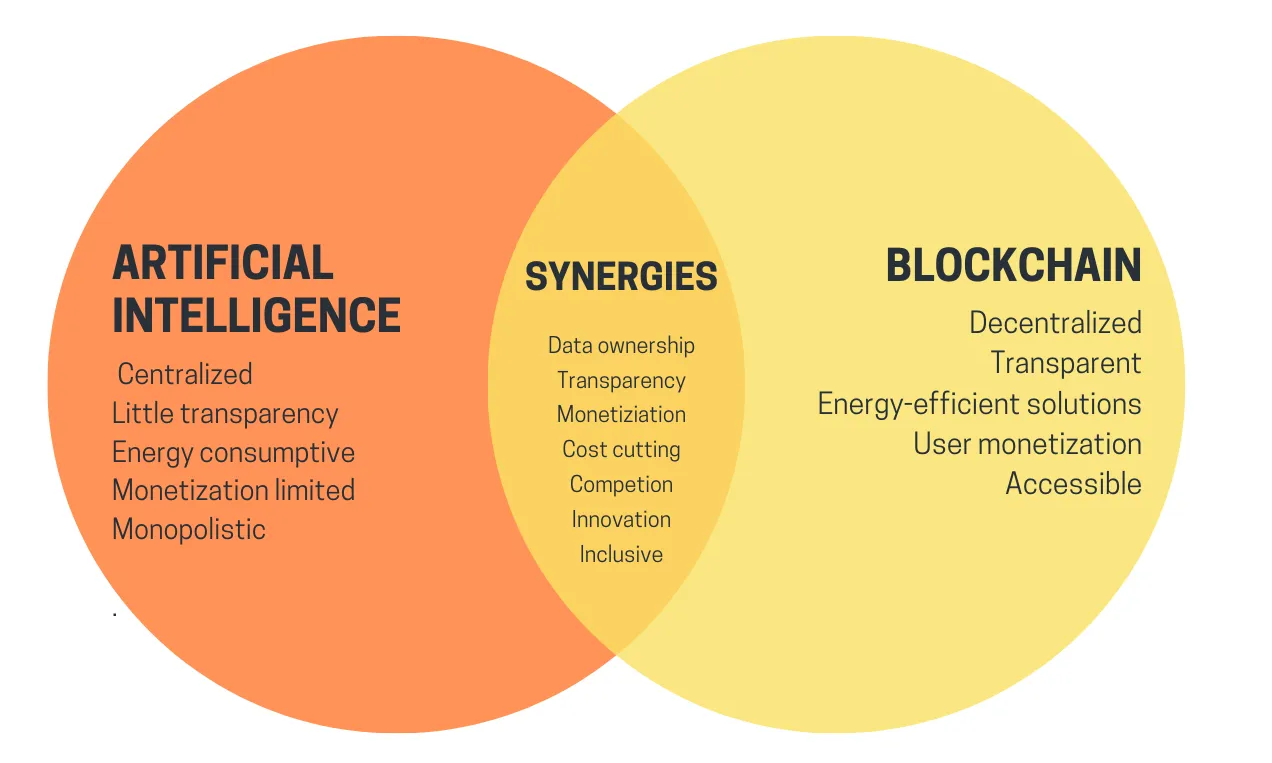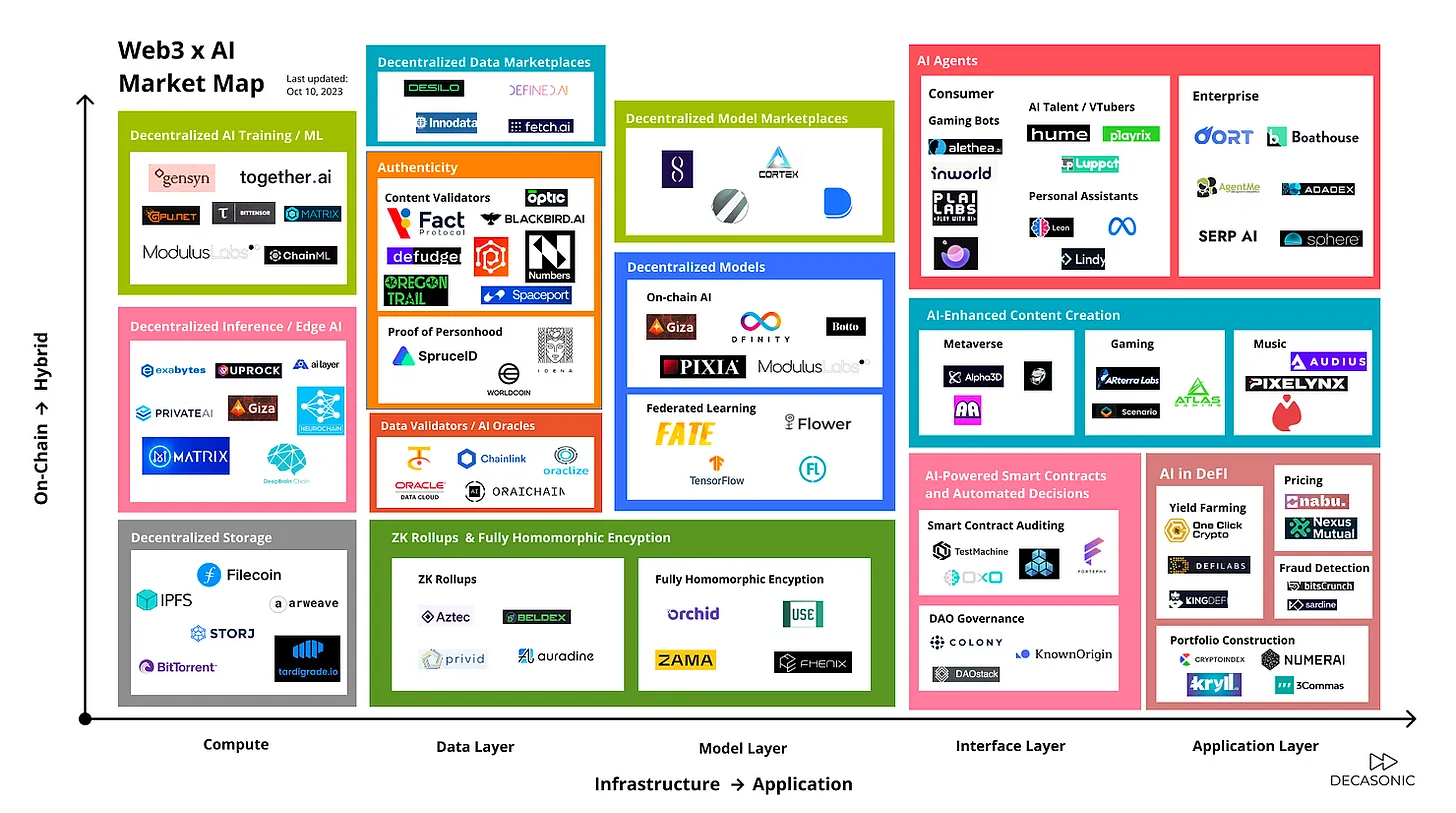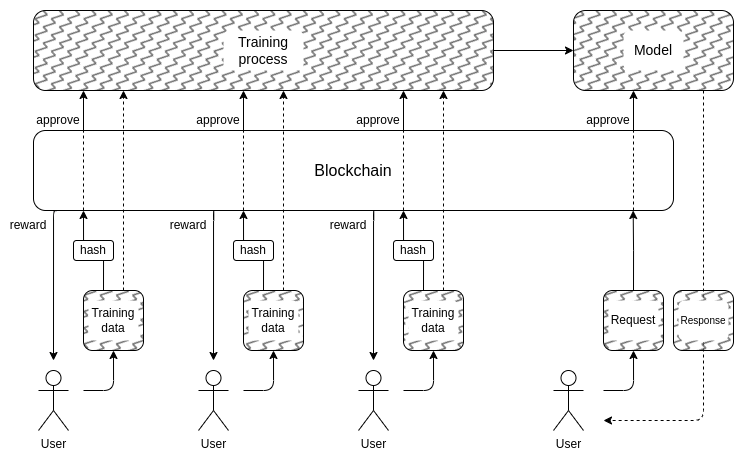The combination of crypto and AI is gaining momentum and is seen by crypto industry experts, such as Vitalik Buterin, Galaxy Research, and Chris Dixon of Andreessen Horowitz, as a potential key driver of activity within the crypto ecosystem, highlighting the most promising directions for this symbiotic development.

A high-level summary of crypto+AI intersections from a uETHblog post.
Galaxy Research’s Watch This Space 2024 report emphasizes that crypto provides AI with a permissionless, trustless, and composable financial layer, unlocking possibilities for decentralized computing, automating complex tasks, and developing identity and provenance solutions to combat Sybil attacks and deep fakes. AI, in turn, can significantly enhance the efficiency, security, and accessibility of crypto applications, increasing developer productivity, which also includes enhancing the auditability of smart contracts and making user interfaces more accessible and engaging.

Source: Web3 & AI: Market Map (Decasonic)
AI agents are well suited for crypto, where they, or their users, can create wallets for transacting with services, other agents, or people. This capability surpasses what is feasible with traditional financial infrastructure, offering a novel dimension of interoperability and flexibility not present in conventional systems.
Vitalik Buterin, in a recent post, highlighted several potential use cases but also noted some risks involved. Using the analogy of a "game," Buterin has divided the potential overlaps between AI and blockchain technology into four categories.
- AI acts as "a player in a game.” The most "viable" category, exemplified by their use in prediction markets.
- AI acts as an "interface to the game.” A category with high potential but high risks includes applications that help users "understand the crypto world around them" and ensure their behavior "matches their intentions."
- AI dictates the "rules of the game.” A risky territory where AI is involved in decision-making processes for decentralized autonomous organizations (DAOs).

(Source: Vitalik Buterin, The promise and challenges of crypto + AI applications)
- AI is the "objective of the game.” A longer-term vision for the future where blockchain serves as a foundation for building better AI models, including creating DAOs to manage AI training data and operations securely and transparently.
“We can create an on-chain DAO that governs the process of who is allowed to submit training data (and what attestations are required on the data itself), who is allowed to make queries, and how many, and use cryptographic techniques like MPC to encrypt the entire pipeline of creating and running the AI from each individual user's training input all the way to the final output of each query. This DAO could simultaneously satisfy the highly popular objective of compensating people for submitting data.” (Vitalik Buterin, The promise and challenges of crypto + AI applications)

Adversarial machine learning example. Source: researchgate.net
Lately, concerns about the use of AI technology have increased after a wave of AI-generated deepfakes has flooded the internet, with scam videos using MicroStrategy co-founder Michael Saylor’s image to promote Bitcoin-related scams or Solana co-founder Anatoly Yakovenko’s image and voice for fake videos, promoting a giveaway through a QR code to thank the community for a “historic day.”
“You are also going to see very advanced phishing and very advanced counterfeit people. It’s going to be very hard to tell on the internet what’s real and what isn’t,” said Chris Dixon in an interview with CNBC.
However, Chris Dixon, Andreessen Horowitz’s general partner, suggests that “blockchains are an important countermeasure” to AI-generated deepfakes by providing “an immutable audit trail” for digital content, thus offering a way to authenticate and secure digital information against sophisticated frauds.

